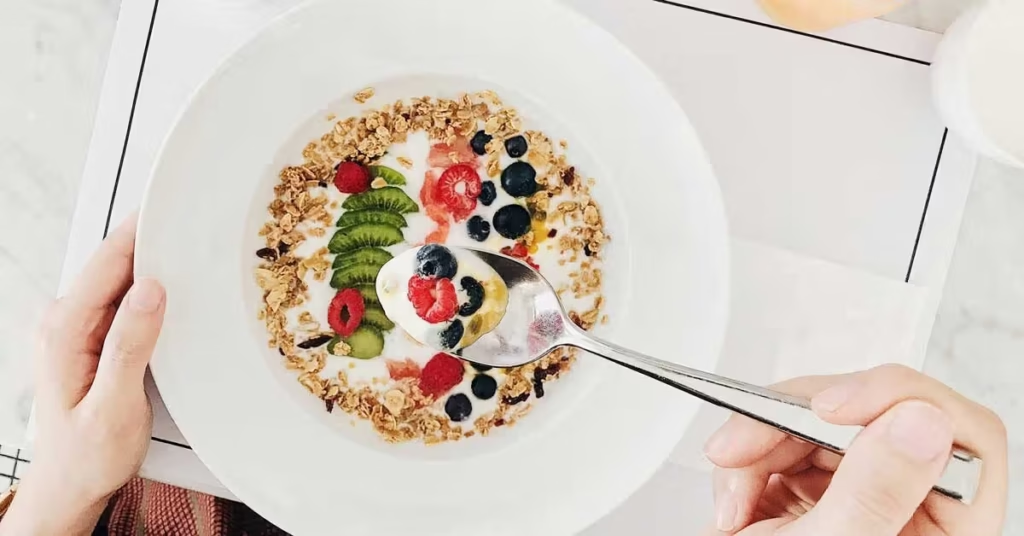
Picture this: it’s a sunny Saturday morning, and I’m sipping my coffee, feeling a bit sluggish after a week of indulging in comfort foods. My stomach’s been staging a silent protest, and I know it’s time to get back on track. That’s when I turn to nature’s digestive superheroes—high fiber fruits. These vibrant, juicy gems aren’t just delicious; they’re packed with fiber that keeps your gut humming along smoothly. Whether you’re dealing with occasional bloating or aiming to boost your overall digestive health, incorporating high fiber fruits into your diet is a game-changer. In this deep dive, we’ll explore why fiber matters, which fruits pack the biggest punch, and how to make them a seamless part of your daily routine. Let’s embark on this fiber-filled journey together!
Why Fiber Is the Unsung Hero of Digestion
Fiber is like the quiet, dependable friend who always has your back. It’s a type of carbohydrate that your body can’t fully digest, which is exactly why it’s so powerful. By passing through your digestive system relatively intact, fiber adds bulk to your stool, promotes regular bowel movements, and feeds the beneficial bacteria in your gut. According to the Mayo Clinic, a high fiber diet can help prevent constipation, reduce the risk of digestive disorders like diverticulitis, and even lower cholesterol levels. For me, the real magic happened when I started noticing less bloating and more energy after upping my fiber intake. But not all fiber is created equal—soluble fiber dissolves in water to form a gel-like substance, slowing digestion, while insoluble fiber speeds things up by adding bulk. Fruits often contain both, making them a versatile choice for gut health.
Top High Fiber Fruits to Support Your Digestion
Let’s get to the good stuff: the fruits that deliver a hefty dose of fiber to keep your digestive system in top shape. Below, I’ve rounded up some of the best high fiber fruits, complete with their fiber content and unique benefits. These aren’t just numbers—they’re your ticket to feeling lighter and more energized.
1. Raspberries: The Fiber Powerhouse
Raspberries are the undisputed champions of fiber, packing a whopping 8 grams per cup, according to the USDA. Their tiny seeds are loaded with insoluble fiber, which helps move things along in your digestive tract. I love tossing a handful into my morning smoothie for a tart, refreshing kick. Beyond digestion, raspberries are rich in antioxidants, which can reduce inflammation in the gut. Pro tip: opt for fresh or frozen raspberries over canned varieties to avoid added sugars that might irritate your stomach.
2. Pears: Nature’s Gentle Laxative
Pears are a personal favorite when my digestion feels off. A medium-sized pear offers about 5.5 grams of fiber, with a mix of soluble and insoluble types, per Healthline. The soluble fiber, pectin, is particularly soothing for the gut, helping to soften stool and ease constipation. I once relied on pears during a particularly sluggish week, and they worked wonders. Leave the skin on for maximum fiber benefits, and choose ripe but firm pears for the best texture.
3. Apples: An Everyday Gut Booster
An apple a day might just keep digestive woes away. With around 4.4 grams of fiber in a medium apple (skin on), this fruit is a convenient and affordable choice, as noted by the Harvard T.H. Chan School of Public Health. The pectin in apples acts as a prebiotic, feeding your gut’s good bacteria. I like to pair apple slices with almond butter for a satisfying snack that keeps me full and my gut happy. Bonus: apples are versatile enough for baking, blending, or eating raw.
4. Avocados: Creamy Fiber with Healthy Fats
Avocados are a bit of an outlier, but don’t let their creamy texture fool you—they’re a fiber superstar. A single avocado contains about 10 grams of fiber, mostly soluble, which helps regulate digestion and stabilize blood sugar, according to Medical News Today. I discovered avocados’ digestive benefits during a phase of experimenting with plant-based meals, and now they’re a staple in my salads and smoothies. Their healthy fats also aid nutrient absorption, making them a win-win.
5. Prunes: The Classic Constipation Cure
Prunes (dried plums) have a reputation for a reason. With 7 grams of fiber per cup, they’re a go-to for relieving constipation, as supported by research from the National Institutes of Health. They contain sorbitol, a natural laxative that draws water into the intestines. I’ll admit, I was skeptical about prunes until a nutritionist friend recommended them during a bout of sluggishness. A few prunes a day, and I was back to feeling like myself. They’re also great in oatmeal or as a sweet snack.
6. Bananas: The Portable Fiber Fix
Bananas are a reliable, on-the-go option, offering about 3 grams of fiber per medium fruit, per WebMD. They’re rich in pectin, which can help firm up loose stools, making them a versatile choice for both constipation and diarrhea. I keep bananas in my bag for busy days when I need a quick, gut-friendly snack. Opt for slightly green bananas for more resistant starch, which acts as a prebiotic.
Comparison Table: High Fiber Fruits at a Glance
To make it easier to choose your digestive allies, here’s a handy comparison table highlighting the fiber content and key benefits of these fruits.
| Fruit | Fiber per Serving | Key Digestive Benefits | Best Way to Enjoy |
|---|---|---|---|
| Raspberries | 8g (1 cup) | Promotes regularity, reduces inflammation | Smoothies, yogurt topping |
| Pears | 5.5g (1 medium) | Soothes gut, eases constipation | Fresh, baked, or in salads |
| Apples | 4.4g (1 medium) | Feeds gut bacteria, supports regularity | Raw, baked, or in smoothies |
| Avocados | 10g (1 fruit) | Regulates digestion, aids nutrient absorption | Salads, toast, smoothies |
| Prunes | 7g (1 cup) | Relieves constipation, natural laxative | As a snack, in oatmeal |
| Bananas | 3g (1 medium) | Balances digestion, prebiotic benefits | Raw, in smoothies, or baked |
How to Incorporate High Fiber Fruits into Your Diet
Adding high fiber fruits to your meals doesn’t have to be a chore—it can be delicious and fun. Here are some practical, creative ways to make these fruits a regular part of your routine, inspired by my own trial and error.
- Start Your Day with a Fiber Boost: Blend raspberries, a banana, and a handful of spinach into a smoothie for a fiber-packed breakfast. The Cleveland Clinic suggests starting your day with fiber to kickstart digestion.
- Snack Smart: Keep apple slices or prunes in a small container for a mid-afternoon pick-me-up. Pairing them with a protein source like nuts keeps you satisfied longer.
- Get Creative with Meals: Add diced pears to a salad with walnuts and goat cheese, or mash avocado into a wrap for a creamy, fiber-rich lunch. I once threw together an avocado and raspberry salad—sounds odd, but the textures were divine.
- Dessert with Benefits: Bake apples or pears with a sprinkle of cinnamon for a gut-friendly dessert that feels indulgent. The American Heart Association recommends cooking with fruits to boost fiber intake without sacrificing flavor.
One thing to keep in mind: increase your fiber intake gradually to avoid bloating or gas. I learned this the hard way after going overboard with prunes one weekend! Pair your fruits with plenty of water to help the fiber do its job.
The Science Behind Fiber and Digestion
Let’s nerd out for a moment. Fiber’s role in digestion is backed by a mountain of research. Soluble fiber, found in fruits like apples and pears, forms a gel in your intestines, slowing digestion and helping you absorb nutrients more effectively. Insoluble fiber, abundant in raspberries and prunes, adds bulk to stool, making it easier to pass. A 2020 study published in the Journal of Nutrition found that diets high in fiber from fruits and vegetables were linked to a lower risk of digestive disorders like irritable bowel syndrome (IBS). Fiber also feeds your gut microbiome, the trillions of bacteria that influence everything from digestion to mood. When I started prioritizing fiber, I noticed not just better digestion but also a steadier energy level throughout the day. It’s like giving your gut a daily tune-up.
Potential Pitfalls and How to Avoid Them
While high fiber fruits are fantastic, they’re not without their quirks. Eating too much fiber too quickly can lead to bloating, gas, or even cramping—trust me, I’ve been there. Here’s how to enjoy these fruits without the discomfort:
- Go Slow: If you’re new to high fiber foods, start with one serving of a high fiber fruit daily and gradually increase. The Academy of Nutrition and Dietetics recommends adding 5 grams of fiber per week to give your body time to adjust.
- Stay Hydrated: Fiber needs water to work its magic. Aim for 8–10 cups of water daily to prevent constipation.
- Balance Your Plate: Pair high fiber fruits with lean proteins and healthy fats to avoid blood sugar spikes. For example, I love combining apples with a handful of almonds for a balanced snack.
- Watch for Sensitivities: Some people with conditions like IBS may find certain fruits, like prunes, trigger symptoms. Consult a dietitian if you’re unsure what works for you.
FAQ: Your Burning Questions About High Fiber Fruits Answered
Which fruit has the highest fiber content?
Raspberries top the list with 8 grams of fiber per cup, followed closely by avocados at 10 grams per whole fruit. Both are excellent for digestion, but raspberries are lower in calories, while avocados offer healthy fats.
Can high fiber fruits help with weight loss?
Yes! High fiber fruits are filling, which can help curb overeating. A study from the Journal of Nutrition showed that fiber-rich diets support weight management by promoting satiety and regulating blood sugar.
How much fiber do I need daily?
The USDA recommends 25 grams for women and 38 grams for men daily. Most people fall short, so adding high fiber fruits like pears and raspberries can help bridge the gap.
Are there any fruits to avoid for digestion?
While most fruits are gut-friendly, some high-sugar or low-fiber options, like canned peaches in syrup, may cause bloating for sensitive individuals. Stick to whole, fresh fruits for the best results.
Can kids eat high fiber fruits?
Absolutely! Kids can benefit from fiber for healthy digestion, but portion sizes should be smaller. For example, half an apple or a few raspberries are great for little ones. Always consult a pediatrician for specific advice.
Conclusion: Your Path to a Happier Gut
High fiber fruits are more than just a tasty addition to your plate—they’re a cornerstone of digestive health. From the tart burst of raspberries to the creamy comfort of avocados, these fruits offer a delicious way to keep your gut in check. My own journey with fiber taught me that small, intentional changes—like swapping processed snacks for a crisp apple or a handful of prunes—can make a world of difference. The science backs it up: fiber supports regularity, feeds your gut microbiome, and even boosts your overall well-being. But the real joy comes from experimenting with these fruits in your kitchen, finding new recipes, and feeling the difference in your body.
Ready to take the next step? Start by picking one or two high fiber fruits from this list and incorporating them into your meals this week. Try a new smoothie recipe, toss some pears into your lunch salad, or keep prunes on hand for a quick snack. Pair your efforts with plenty of water and a balanced diet, and your gut will thank you. If you’re looking for more inspiration, check out resources like the USDA’s MyPlate for personalized nutrition tips. Here’s to happy, healthy digestion—and a little more pep in your step!
